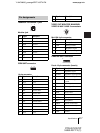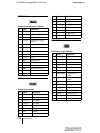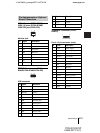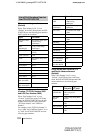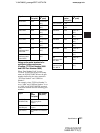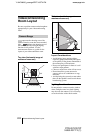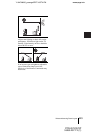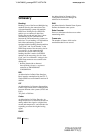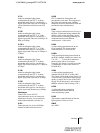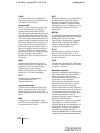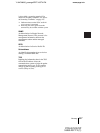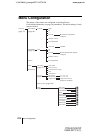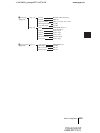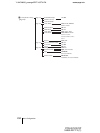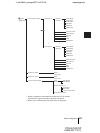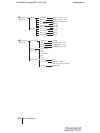
PCS-G70/G70P
3-863-237-11 (1)
Y:\04C08060_passage\EDIT\10OTH.FM
masterpage:Left
225Glossary
G.711
Audio encoding/decoding format
recommended by the ITU-T. A phone
bandwidth audio signal is converted to a
digital signal with a data rate of 64 Kbps. It
can be transmitted with a data rate of 56
Kbps.
G.722
Audio encoding/decoding format
recommended by the ITU-T. A 7-kHz
bandwidth audio signal is converted to a
digital signal with a data rate of 48 Kbps, 56
Kbps or 64 Kbps.
G.722.1
Audio encoding/decoding format
recommended by the ITU-T. A 7-kHz
bandwidth audio signal is converted to a
digital signal with a data rate of 24Kbps or
32 Kbps.
G.723.1
Audio encoding/decoding format
recommended by the ITU-T. A phone
bandwidth audio signal is converted to a
digital signal with a data rate of 5.3 Kbps or
6.3 Kbps.
G.728
Audio encoding/decoding format
recommended by the ITU-T. A phone
bandwidth audio signal is converted to a
digital signal with a data rate of 16 Kbps.
G.729
Audio encoding/decoding format
recommended by the ITU-T. A phone
bandwidth audio signal is converted to a
digital signal with the data rate of 8 Kbps.
Gatekeeper
Controls the access of H.323
videoconference devices on a network.
Administers the zone, access limitation,
audio/video bandwidth, and alias etc.
H.221
Frame structure for a 64 to 1920 Kbps
channel in audiovisual teleservices.
H.239
ITU-T standard for sharing data and
presentations with video. This supports the
dual video presentation mode, enabling
endpoints to receive and transmit video and
presentation data simultaneously.
H.261
Video codec for audio/visual services as p ×
64 Kbps. Videoconferencing standard that
defines a video coding algorithm, picture
format and error correcting technology for
communication between different
manufacturers’ video codecs.
H.263
A video coding algorithm based on the
H.261 standard. This format enables
communication via a lower bit rate.
H.263+
Video encoding/decoding format based on
the H.263 standard, added by the Annex I to
T (I, J, K …… T), that allows enhanced
picture quality and error resistance.
Normally, this format is a profile used with
a combination of some of the Annex for
H.263/H.263+.
H.264
A video coding algorithm newly
standardized by the ITU-T in May 2003.
This format realizes high-quality picture via
a lower bit rate. It provides an equal picture
quality via half as low bit rate as the H.263
format. The H.264 format is also called as
MPEG4 Advanced Video Coding (AVC).
H.320
A videoconferencing standard for
communication between different
videoconferencing system.
H.323
This enables communications on the non-
QOS (Quality of Service) LAN.
HMLP
See “MLP”.



